It’s that time of year again! Rattlesnakes are waking up in spring in Arizona to leave their winter brumation dens to feed, breed, and be social. Unfortunately, their most active time of year coincides with ours, and that’s where problems can occur.
No matter where you stand on rattlesnakes, knowledge is power. Understanding their behavior and habits will help you prevent a dangerous encounter with one of these misunderstood creatures.
Arizona Rattlesnake Season Safety
Danger aside, rattlesnakes don’t want to run into you any more than you want to run into them. You’ll be safe from rattlesnakes by following a few easy tips.
- Stay on the trails. Bushwhacking may be fun, but it is a great way to run into a rattlesnake.
- Use a walking stick. Snakes don’t hear the way we do. So, by rustling the leaves and debris in front of you, you give the snakes time to move along.
- Make sure you can see where you place your hands and feet. Because most bites happen on the hands and feet, keeping a clear line of sight on where you’re putting them makes sense.
- Remove food and hiding places from your yard. Snakes follow prey and look for shelter. Bird feeders, debris, and wood piles can attract rodents, which the snakes eat.
Which Rattlesnake Species Are Most Common in Arizona
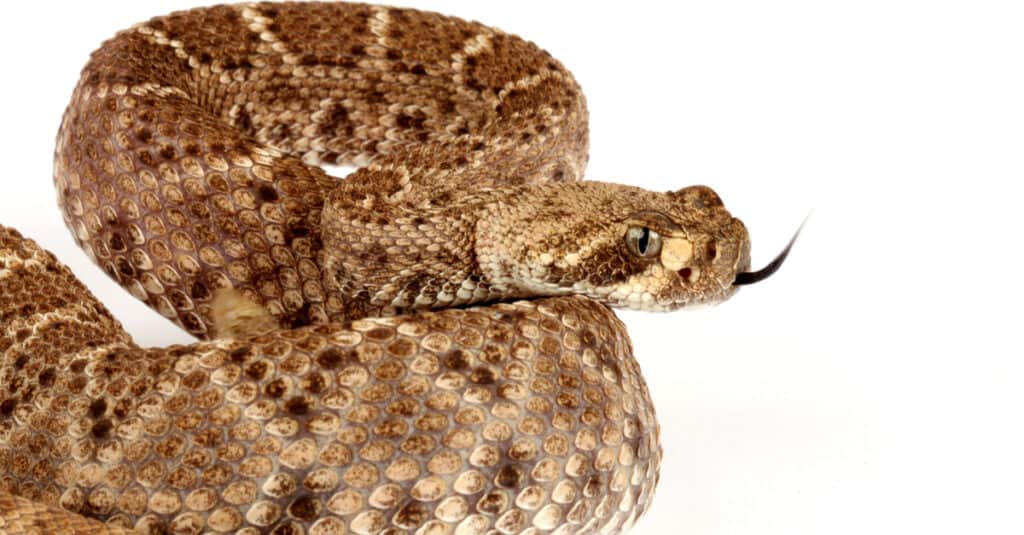
Western diamondback rattlesnakes are large pitvipers and the biggest species in Arizona.
©Audrey Snider-Bell/Shutterstock.com
Of the roughly 13 rattlesnake species in Arizona (plus a couple of subspecies), the three most common are the western diamondback rattlesnake, the black-tailed rattlesnake, and the Mojave rattlesnake.
Western diamondback rattlesnake. This extremely nervous snake rattles at the slightest sign that there may be, possibly, something out to get it. Because when you’re paranoid, everything’s out to get you. As a result, it’s more likely to bite than the other species. However, it’s also easier to avoid because it will be rattling before you see it.
Black-tailed rattlesnake. Bites from this species are rare because it’s a docile rattlesnake. It’s not likely to bite and tries to escape above all else.
Mojave rattlesnake. Of the three, this species has the most dangerous venom. Scientists have discovered a unique neurotoxin in their venom that other rattlesnakes don’t possess.
Where to Find Rattlesnakes in Arizona
Rattlesnakes try to avoid people whenever possible. However, there are places where they’re more likely to be found lurking. The vast majority of rattlesnake sightings are in the southwestern half of the state. If you took a map of Arizona and drew a straight line from the northwest corner to the southeast corner, most of the recorded sightings would be to the left of that line.
Of course, that doesn’t mean all rattlesnakes in Arizona are in the southwest. A few, like the prairie rattlesnake and western rattlesnakes, are in the north and northeast reaches — you won’t find them anywhere else in the state. Also, the Arizona black rattlesnake inhabits the mountainous areas from Arizona’s northwest corner to the southeast corner.
Within their territory, rattlesnakes prefer areas with plenty of hiding places. This can mean rocky outcrops with lots of nooks and crannies, but it can also mean a large xeriscaped yard.
These reptiles are more common in remote areas and along the edges of civilization. For example, in neighborhoods, the yards with more rattlesnake sightings are on the corner lots and those that back up against parks and undeveloped areas. Those in the middle will see fewer.
When Rattlesnakes Are Most Active
Rattlesnake season usually begins in March and ends in October when they tuck themselves in for the winter. However, it’s not date-dependent. Snakes don’t have calendars that tell them when to wake up. Instead, it’s temperature-dependent. When days hit the 70s and the nights stay above 50 degrees for three days in a row, snake season is on.
They’re most active in spring and fall when they’re moving to and from brumation dens. This is when you’re likely to see them at any point during the day. However, during the summer, they restrict most of their activity to the night. While this seems weird because rattlesnakes are cold-blooded, it makes a lot of sense. These animals depend on the sun’s heat and warmth to make their bodies function, but they can overheat too.
1. Rattlesnakes are social snakes
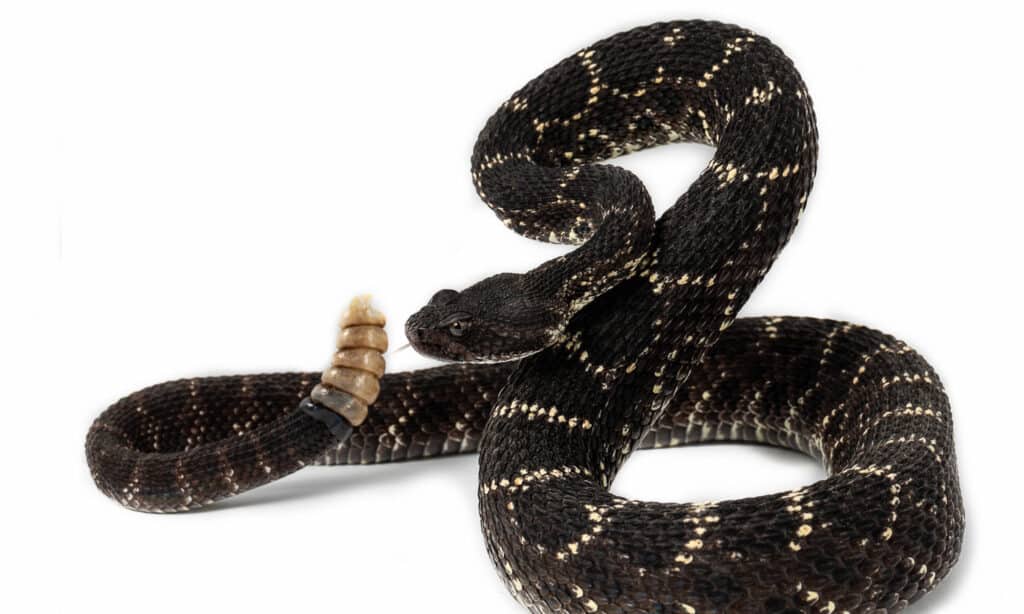
Rattlesnakes raise their body off the ground in an S shape and rattle a warning.
©Scott Delony/Shutterstock.com
You’re not hallucinating. Rattlesnakes are surprisingly social! There are many instances of female snakes protecting each other’s babies. So the idea that reptiles do not parent isn’t true, and the truth is more complicated and fascinating!
Here are a few facts:
- Rattlesnakes often return to the same place where they were born to brumate.
- Scientists have seen the same snakes “associating” with one another for years. You could say they were friends.
- Mother snakes and their babies often brumate together.
All of this adds up to behavior you can predict. Although rattlesnakes spend a lot of their year alone, they have specific patterns they follow.
2. Rattlesnakes have a lot to do when they wake up in the spring!
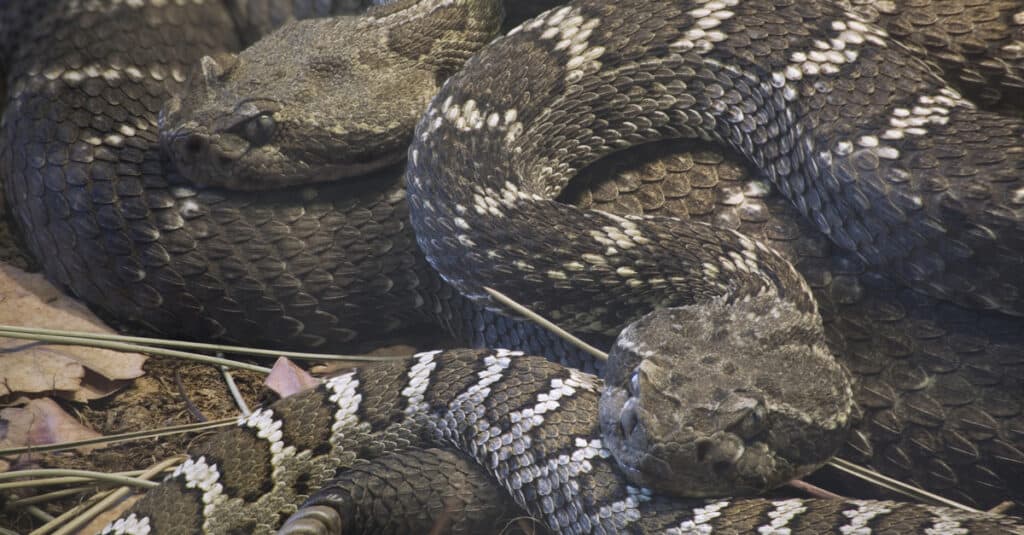
Arizona black rattlesnakes share communal dens and females may share parenting duties.
©Dario Sabljak/Shutterstock.com
When rattlesnakes wake up from brumation, they are busy. They’ve spent months not eating and barely drinking, and now they have a to-do list that rivals human parents during back-to-school season.
- Rattlesnakes must eat as much as possible. Seriously, these guys are always hunting for food and water during the spring before it gets too hot.
- Rattlesnakes mate during spring. Males are out looking for receptive females for breeding and establishing breeding rights by engaging in ritual combat with rival males.
- They have to avoid predators. Although this is true most of the year, rattlesnakes are more vulnerable during the spring because they’re on the move. These snakes are prey for almost every predator big enough to take one. Even squirrels.
3. Rattlesnakes don’t always rattle a warning

Rattlesnakes are easy to identify by the rattle at the end of their tail. Listen carefully when hiking and you may hear it.
©Chase D’animulls/Shutterstock.com
While most prefer to rattle warnings, it’s not always possible. Sometimes they’re startled and react out of fear, but their rattles are brittle and break. Also, if it’s a baby, they may not have a rattle yet.
However, if you hear a rattle, back away because the snake is telling you it’s scared; you probably won’t be bitten if you respect that fear and give it space.
4. Most bites happen on the hands and feet
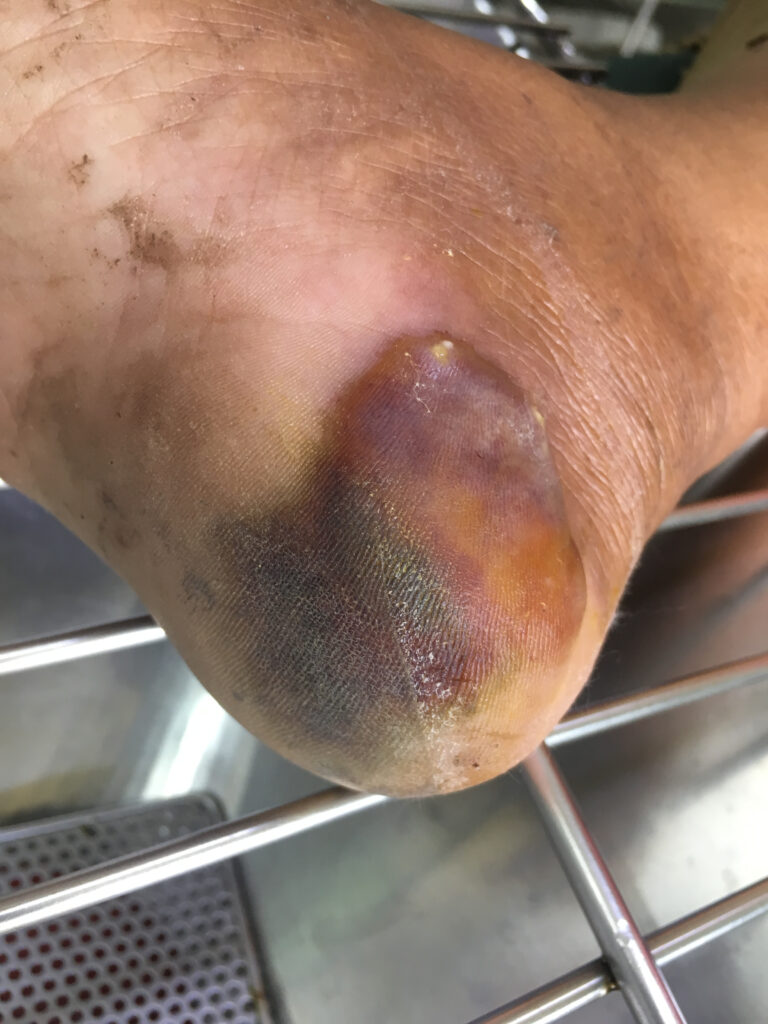
Most bites occur when humans accidentally step on or near a rattlesnake or attempt to handle or kill one.
©Chuanpit/Shutterstock.com
This fact tells you a couple of things. The first thing is don’t stick your hands or feet where you can’t see them. So, when hiking or gardening, ensure you can see where you will step or reach.
Second, don’t play with rattlesnakes. This should be common sense. However, an Arizona man discovered this was unwise when he decided to pick up a rattlesnake in his yard and pose with it.
5. Baby rattlesnakes are not more dangerous than adults
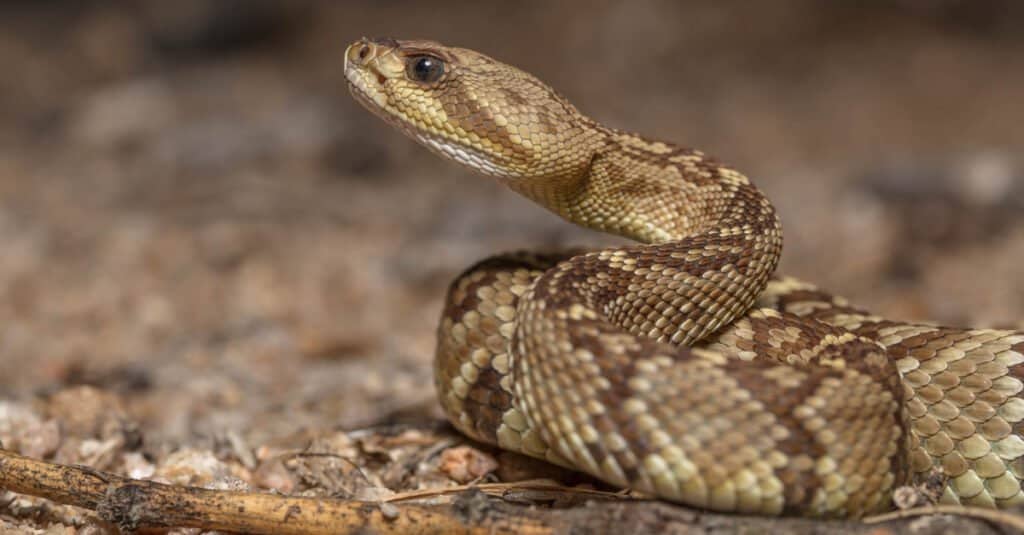
Baby rattlesnakes are not as dangerous as adults. They have less venom because they’re smaller!
©Alexander Wong/Shutterstock.com
We’re not really sure where that myth started. However, baby rattlesnakes are born knowing how to control their venom. It wouldn’t be a very good survival tactic to inject all of your venom into something you weren’t planning to eat.
In many cases, they’re probably less dangerous than adults because they do not have as much venom to inject.
Rattlesnake Ecology and Conservation
Although rattlesnakes are among North America’s most notorious and feared snakes, they are vital to the ecosystem. Where many snakes eat other snakes, lizards, birds, and amphibians, rattlesnakes feed primarily on rodents — they are key to keeping those populations in check. They’re also food sources for many species, like roadrunners, hawks, and even ground squirrels may kill and eat a snake if they’re hungry enough.
In Arizona, it’s not illegal to kill snakes, but the Department of Fish & Wildlife considers it unethical unless absolutely necessary. Non-profit groups like Save the Buzztails sponsor studies and conservation efforts across the U.S. The large number of rattlesnake species in Arizona makes it a prime state for research.
While scary, these reptiles deserve our thanks and protection. Without them, we would be overrun by rodents in no time flat.
The photo featured at the top of this post is © Creeping Things/Shutterstock.com
Discover the "Monster" Snake 5X Bigger than an Anaconda
Every day A-Z Animals sends out some of the most incredible facts in the world from our free newsletter. Want to discover the 10 most beautiful snakes in the world, a "snake island" where you're never more than 3 feet from danger, or a "monster" snake 5X larger than an anaconda? Then sign up right now and you'll start receiving our daily newsletter absolutely free.
Thank you for reading! Have some feedback for us? Contact the AZ Animals editorial team.






